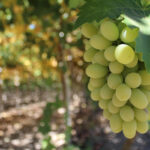Uruguay frosts slash citrus production by 36%
The Uruguayan government has estimated frost damages in the country's citrus sector will have cut production by more than a third this year, with around US$35 million in losses. This equates to more than 115,000 metric tons (MT) in lost fruit, due to weather conditions not seen since 1967. The country's biggest citrus company Caputto is reluctant to announce its losses as the season is not finished yet, but commercial director Martin Calcagno tells www.freshfruitportal.com the industry is suffering and will take a while to recover. 
For Calcagno, what is most difficult to believe is how quickly the weather changed from 20-21°C (68-69.8°F) conditions down to below zero in June.
"We were having a spectacular year. We started collecting satsumas of very good quality without problems, and it was the same with clementines, clemenvillas too," he says.
"All of our clients were content as this was an exceptional year, until these frosts happened in June and changed all our plans."
He says frosts are normal in Uruguay and tend to happen in July, but it's not just the fact they came earlier which is the problem.
"That wasn't the only reason, it was also because of the abrupt change. When we have the frosts in July the temperature change is gradual, going down day-by-day and there isn’t such a thermal peak that could mean you’re going right from 20°C (68°F) down to -2°C (28.4°F) and in some areas even lower.
The company does have some farms in the country's south where the damage was not significant, but the bulk of its farms are in the heavily-affected north in Salto and Paysandú, mostly within 80km (50 miles) of its packinghouse.
"The damages have already shown themselves and affected a large quantity of volume, and there is fruit that wasn’t exported for quality issues - the company doesn’t ship fruit with damages.
"Economically, the effects are substantial and we have been suffering - before the season we had deals basically sealed with clients, but now we have to adjust to the realities we face today."
He adds there has also been the issue of internal fruit damage.
"Here in our packinghouse we have a program that detects fruit with problems, and the discards increased a lot; all this fruit that couldn’t be exported means less revenue for the company.
Calcagno says Navels have been the worst hit and easy peelers were also affected.
"In June we had some problems with the late Navels. Normally we can carry on the harvest for three or four more weeks, but the volume has fallen and now are basically finished.
"We have started with the Salustianas, which also have lower volume. In two or three weeks we’ll start with Valencias, and with mandarins - we finished up with clemenvillas three weeks earlier than thought."
He says samples indicate the citrus varieties to be picked in two to three weeks time will likely be in better shape.
"For the later varieties, such as Valencias and some mandarins like Ortaniques and Murcotts, the harvest will start in two or three weeks and it will be fairly normal.
"There have been damages but we won’t know them exactly until we harvest."
He says the company's aim now is to try and keep prices strong to help improve returns.
"It’s difficult, we have to try and make the best of the market situation, get the best returns, keep sales prices up.
"Markets are very good and the demand is there, but that’s just a reflection of everything.
"It’s impossible to completely recover the losses from a harvest like this now - we have a juice factory and all the fruit we can’t export is going to our own factory, but this is not something we can recover from in the short-term."
Photo: Federcitrus








































